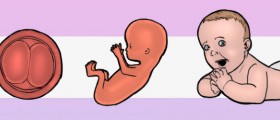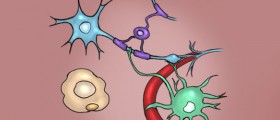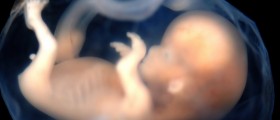Fetal Brain Development
Once a woman conceives a pregnancy, a new life starts. In the first eight weeks, it is just called embryo, while from that week to the end of the pregnancy, it is called fetus. The development of the brain in the fetus includes the development of the brain together with the nervous system and the spinal cord.

- The Developmental Origins of Health and Disease (DOHaD) hypothesis posits that the antenatal period is a particularly vulnerable period of development in which exposure to adverse environments, such as malnutrition, infection or stress can have long-lasting or permanent impacts on the health trajectory of the offspring – a process that is termed “developmental programming”.
- Optimal brain development relies upon a highly temporally constrained series of transcriptional and epigenetic states; indeed this is underscored by the results from large genetic studies showing that the peak expression of common gene variants involved in the aetiology of several neurodevelopmental disorders occurs during pregnancy. Disruption of these expression networks may mediate some of the risk for atypical neurodevelopment.
- Both maternal under- and overnutrition may have consequences for fetal neurodevelopment. The detrimental effects of maternal undernutrition have been characterised in studies of individuals who were exposed to severe undernutrition in utero during the Dutch Hunger Winter. In early 1944, the western part of The Netherlands was under German occupation and endured severe food shortages. During this time the population, including pregnant women, had an estimated caloric intake of 400–800 per day for a 5–6 month period. The increased incidence of chronic heart disease and type 2 diabetes in the offspring of these pregnancies is well documented.
- Pregnant women are more susceptible to infection and display an increased inflammatory response to some pathogens, but the mechanisms behind this are largely unknown. Maternal viral infections during pregnancy may increase the risk of psychiatric disease in the offspring, with the time of infection being particularly important.
- Stress can be broadly described as an imbalance between the environment and an individual's perception of their resources to cope with that environment. Maternal stress can occur as a result of a diverse range of environmental perturbations and crucially, the experience of stress is highly individually specific. Therefore there are many domains of stress which can be associated with pregnancy. While stress during pregnancy affects women worldwide, pregnancy-related stress in lower and middle income countries appears to be associated with a greater risk of adverse outcome in offspring.
- A growing number of studies suggest that ‘programmed’ effects might not be limited to the first generation offspring i.e. those directly exposed in utero, but may be transmitted to a number of subsequent generations. Human epidemiological studies have demonstrated evidence for such ‘transgenerational’ effects on birth weight and cardiovascular risk
Fetal Brain Development Timeline
In the first two weeks of pregnancy, the fertilized egg is implanting inside of the uterus. In the third week the heart, the backbone and the brain of the embryo start to form. The further development of the brain continues in the fourth week of the pregnancy when fore, middle and hindbrain begin to be distinguished together with the optical stalk. In the fifth week, the brain continues to develop while the heart with the four chambers formed starts to function. During this week, the embryo gets facial features, as well as arms and legs with the fingers.
The brain hemispheres are formed in the sixth week of the pregnancy. In this period the neural tube, which links the spinal cord and the brain, is also formed. Until the end of the seventh week of the pregnancy, the brain formation is almost completely finished. The eighth week of the pregnancy is characteristic for the big head, as well as for the hindbrain development, which controls the heart rate and breathing. While in the ninth week, the nervous system is almost completed for its proper functioning, and in the tenth week, the fetus develops the genitals so that the sex of the baby can be seen through the ultrasound. In the tenth week, the brain starts to form even 250 000 neurons in a minute.
In the eleventh week, the spinal cord is defined, while vocal cords and taste buds are formed in the twelfth week. The week thirteen is characterized by the complete forming of the heart, the spleen and the liver, while the fetus begins to use placenta to take nourishment from the mother in the fourteenth week. The hair grows on the skin in the fifteenth week, while in the sixteenth week the mother can feel the kicking of the baby.
Throughout the seventeenth, eighteenth and nineteenth week of the pregnancy, the fetus develops the brain very rapidly and the brain is now divided into the left and right brain hemispheres. From the twentieth to the twenty-second week the brain furthers develop and now it is possible to recognize different sounds. In the twenty-third week, the nerve cells join and form the nervous system, and starting from this week, the brain begins to control the other body functions. In the twenty-seventh week, the fetus may even be dreaming and with the twenty-eighth week, the second trimester of the pregnancy is finished, with the brain completely formed.
From the twenty-ninth to fortieth week, which is the third trimester of pregnancy, the brain only grows in size and there are only few brain developments.












_f_280x120.jpg)




Your thoughts on this
Loading...